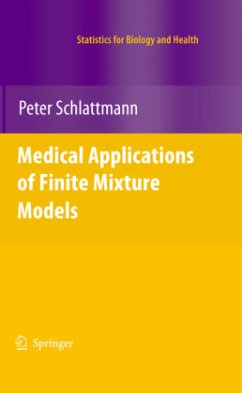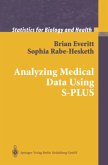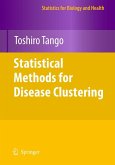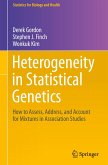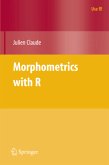Patients are not alike! This simple truth is often ignored in the analysis of me- cal data, since most of the time results are presented for the "average" patient. As a result, potential variability between patients is ignored when presenting, e.g., the results of a multiple linear regression model. In medicine there are more and more attempts to individualize therapy; thus, from the author's point of view biostatis- cians should support these efforts. Therefore, one of the tasks of the statistician is to identify heterogeneity of patients and, if possible, to explain part of it with known explanatory covariates. Finite mixture models may be used to aid this purpose. This book tries to show that there are a large range of applications. They include the analysis of gene - pression data, pharmacokinetics, toxicology, and the determinants of beta-carotene plasma levels. Other examples include disease clustering, data from psychophysi- ogy, and meta-analysis of published studies. Thebook is intended as a resource for those interested in applying these methods.
From the reviews:
"This book is intended as a resource for working statisticians, epidemiologists, pharmacokineticists and physicians. ... the material is most suitable for working (bio)statisticians who wish to apply finite mixture models. The book would make a good supplementary textbook for say a second year master's level course. ... there are many nice examples demonstrating finite mixture modeling. ... Each example is extremely well motivated. ... Overall, the book is well written ... ." (Timothy D. Johnson, Journal of the American Statistical Association, Vol. 106 (493), March, 2011)
"This lucid and consistent presentation should be welcome by researchers in the greater domain of biomedical research. This impressive monograph attempts to cover the use of finite mixture models in a variety of biomedical problems, illustrated by appropriate case studies. ... Statistical analysis has been presented consistently at an intermediate level so that researchers in a broader biomedical field, constituting the general audience of this book, can appreciate the rationality of statistical modelling and analysis to a greater extent." (Pranab K. Sen, International Statistical Review, Vol. 79 (2), 2011)
"The motivation for this book is that the features of medical data can be governed by the existence of several groups/clusters/classes. ... Through detailed examples and theoretical background, the book is successful in showing how finite mixtures and related methods can be applied in medical contexts. ... this is a very interesting and generally well-written book. ... it should be of interest to readers from the physical and engineering sciences because finite mixture analysis is widely applicable." (Charles Heckler, Technometrics, Vol. 52 (4), November, 2010)
"This book is intended as a resource for working statisticians, epidemiologists, pharmacokineticists and physicians. ... the material is most suitable for working (bio)statisticians who wish to apply finite mixture models. The book would make a good supplementary textbook for say a second year master's level course. ... there are many nice examples demonstrating finite mixture modeling. ... Each example is extremely well motivated. ... Overall, the book is well written ... ." (Timothy D. Johnson, Journal of the American Statistical Association, Vol. 106 (493), March, 2011)
"This lucid and consistent presentation should be welcome by researchers in the greater domain of biomedical research. This impressive monograph attempts to cover the use of finite mixture models in a variety of biomedical problems, illustrated by appropriate case studies. ... Statistical analysis has been presented consistently at an intermediate level so that researchers in a broader biomedical field, constituting the general audience of this book, can appreciate the rationality of statistical modelling and analysis to a greater extent." (Pranab K. Sen, International Statistical Review, Vol. 79 (2), 2011)
"The motivation for this book is that the features of medical data can be governed by the existence of several groups/clusters/classes. ... Through detailed examples and theoretical background, the book is successful in showing how finite mixtures and related methods can be applied in medical contexts. ... this is a very interesting and generally well-written book. ... it should be of interest to readers from the physical and engineering sciences because finite mixture analysis is widely applicable." (Charles Heckler, Technometrics, Vol. 52 (4), November, 2010)

